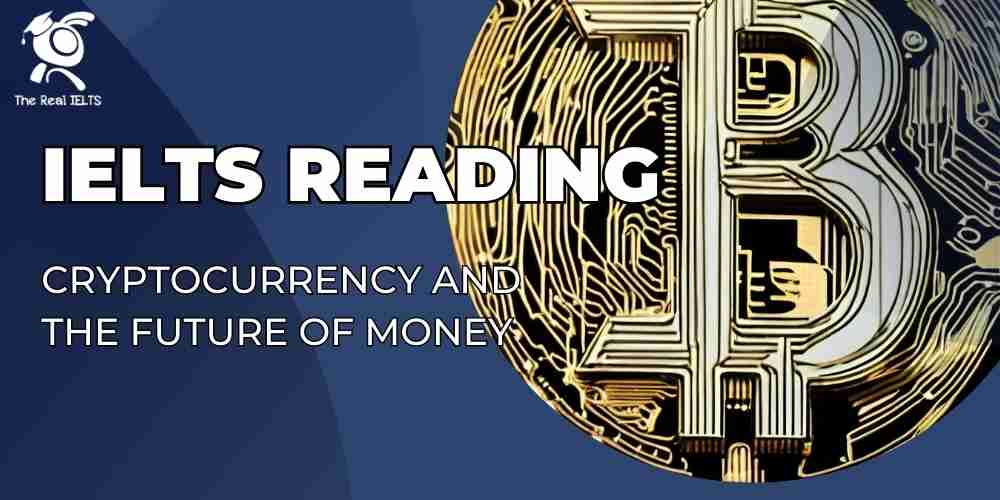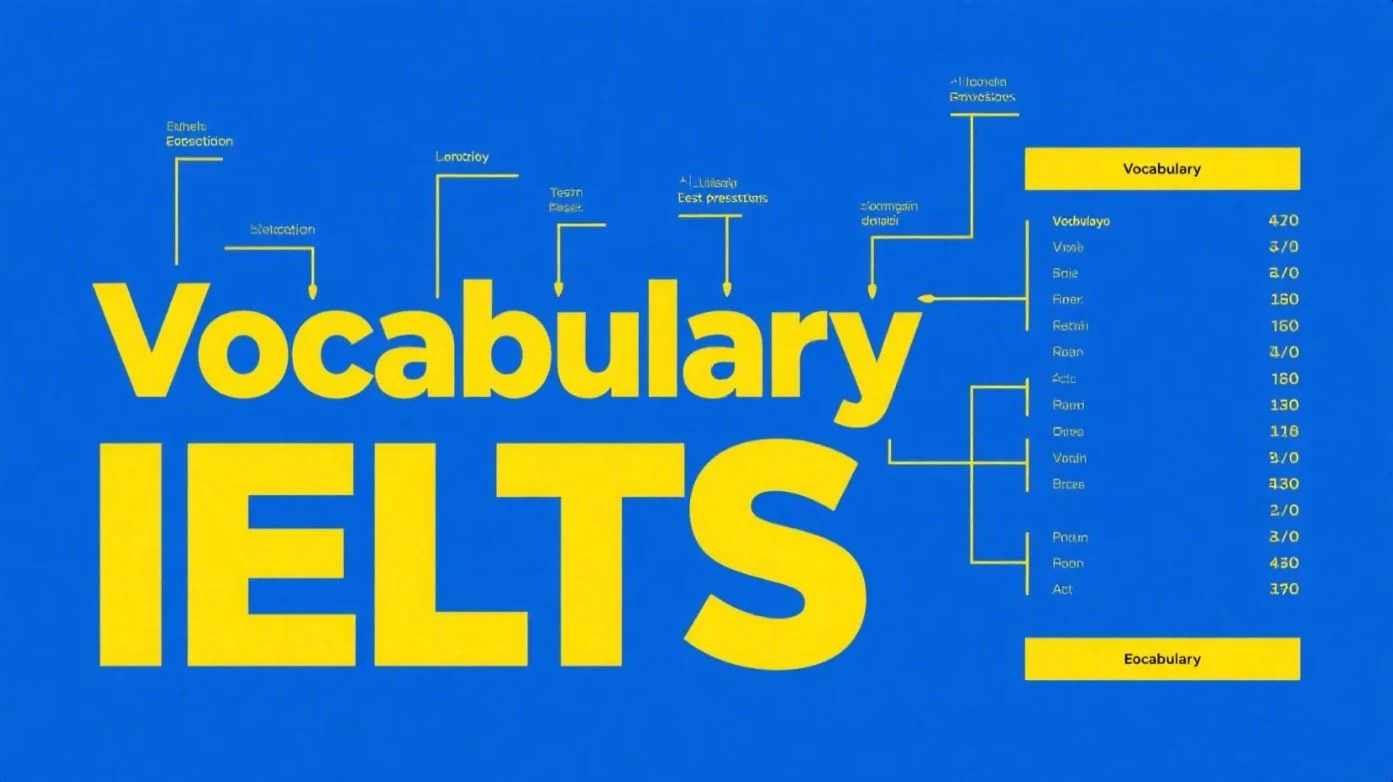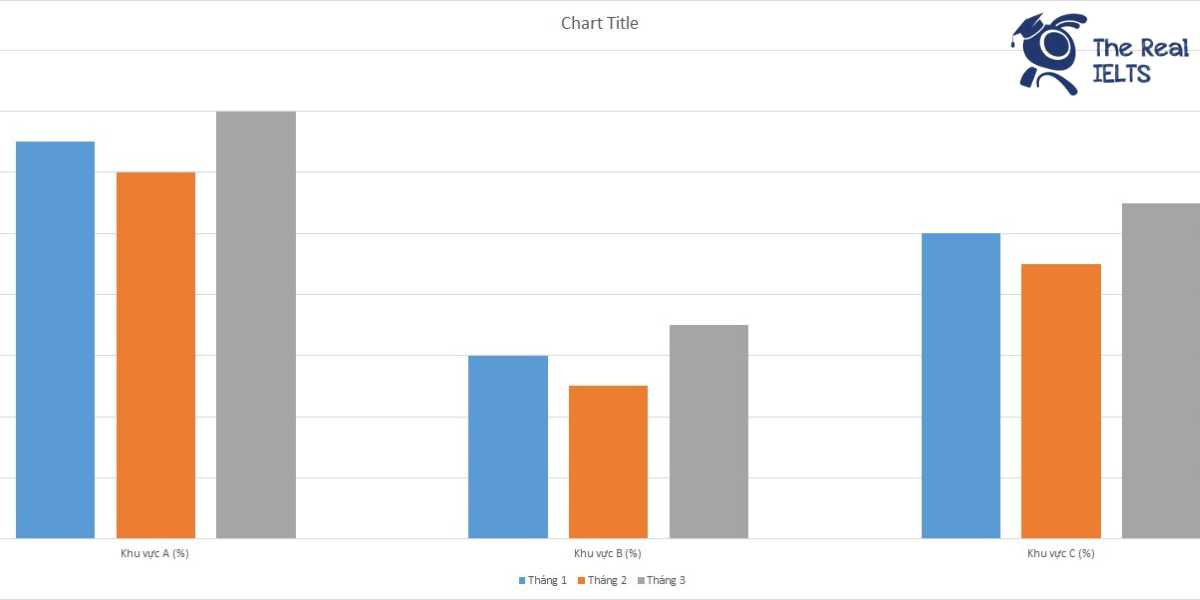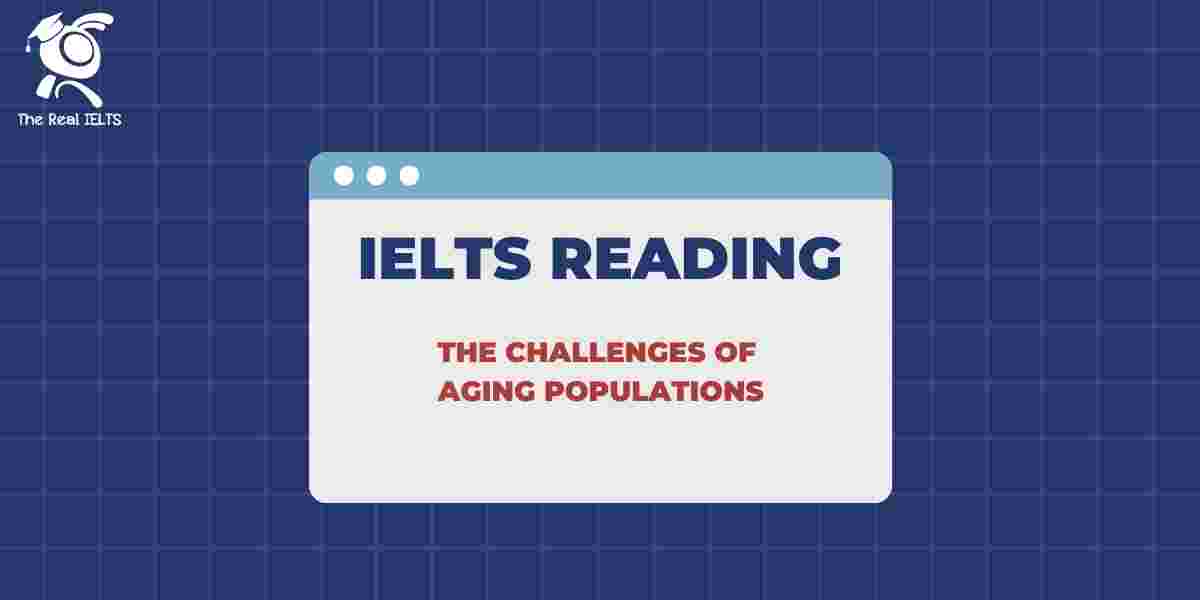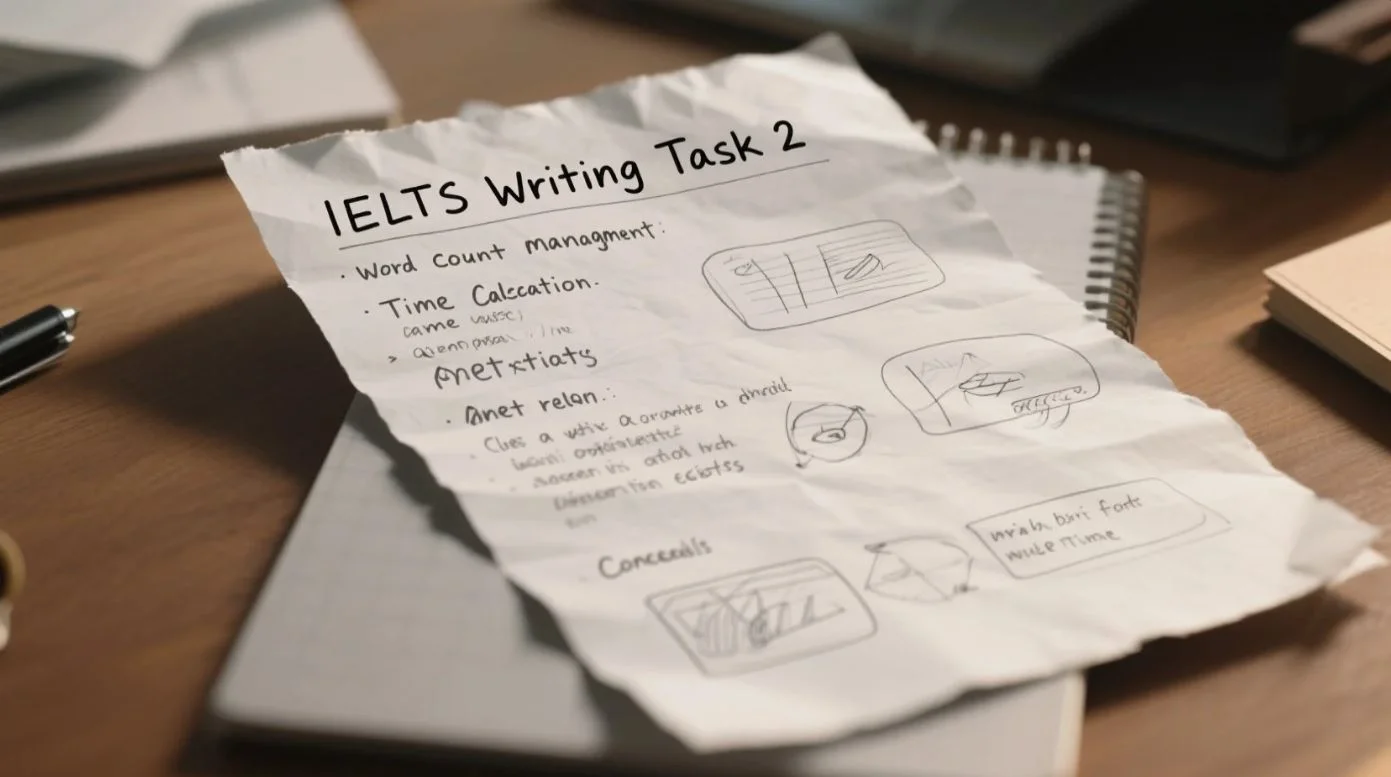IELTS Reading 64: Cryptocurrency and the future of money là chủ đề thuộc chuỗi bài luyện tập 11 dạng bài IELTS Reading và các bài tập luyện tập.
Học lại bài cũ: IELTS Reading 63: Economic impact on the environment.
IELTS Reading: Cryptocurrency and the future of money
Cryptocurrency has gained global attention in recent years as an innovative digital form of currency that could transform the future of money. Unlike traditional currencies, which are issued and regulated by governments, cryptocurrencies are decentralized and rely on blockchain technology—a digital ledger that securely records transactions. Bitcoin, the first cryptocurrency, was launched in 2009 by an anonymous individual or group known as Satoshi Nakamoto, sparking the beginning of a financial revolution.
The defining feature of cryptocurrencies is their decentralized nature. With traditional currencies, central banks control the supply and monitor transactions. However, cryptocurrencies operate without a central authority. Blockchain technology records each transaction across multiple computers, making the data immutable and transparent. This decentralized approach can reduce risks associated with currency manipulation, inflation, and even government intervention.
As cryptocurrency adoption grows, it has sparked debates about its potential benefits and drawbacks. Advocates argue that cryptocurrencies offer a more accessible and inclusive financial system, especially for individuals in regions with limited access to traditional banking. Cryptocurrency transactions are often faster and cheaper, particularly for international transfers, since they bypass banks and eliminate high fees.
However, critics raise concerns about the volatility and security of cryptocurrencies. The value of cryptocurrencies, like Bitcoin, can fluctuate wildly, leading to significant financial risks for investors. Furthermore, as digital assets, cryptocurrencies can be vulnerable to hacking and cyber threats. Governments worldwide are also grappling with regulatory challenges. While some countries have embraced cryptocurrencies, others have banned them or imposed strict regulations to curb risks associated with money laundering and illegal transactions.
Looking ahead, the future of cryptocurrency remains uncertain. While it has the potential to reshape the global economy, widespread adoption may depend on technological advancements, regulatory frameworks, and public trust. Some experts predict that cryptocurrencies could coexist with traditional currencies, serving specific niches and use cases, while others foresee a world where digital assets replace fiat currency entirely.
As the cryptocurrency landscape evolves, understanding its implications on the future of money is crucial.
Questions
1. Multiple Choice
Which of the following is a defining characteristic of cryptocurrencies?
A. Government regulation
B. Centralized control
C. Blockchain technology
D. High transaction fees
2. True/False/Not Given
- Bitcoin was introduced by a government entity in 2009.
- Cryptocurrency transactions are generally slower than traditional banking transactions.
- Some countries have fully embraced cryptocurrency without any restrictions.
3. Yes/No/Not Given
- Cryptocurrencies will eventually replace all forms of fiat currency.
- Governments view cryptocurrency as a potential tool for tax evasion.
- Blockchain technology improves transaction transparency.
4. Matching Information
Match the following pieces of information with the correct paragraphs (A, B, C, D, or E):
- Explanation of blockchain’s role in transaction security
- Mention of cryptocurrency’s potential impact on global financial systems
- Risks associated with the fluctuating value of cryptocurrencies
5. Matching Headings
Choose the correct heading for each paragraph:
i. Challenges of Cryptocurrency Adoption
ii. The Launch of Bitcoin and the Start of a New Era
iii. Cryptocurrency’s Potential Benefits in Unbanked Regions
iv. Comparing Cryptocurrencies and Traditional Banking
6. Matching Sentence Endings
Match the beginning of each sentence with the correct ending:
- Cryptocurrencies are seen by some as a way to…
i. reduce dependence on centralized financial institutions.
ii. increase the control of central banks. - One advantage of blockchain technology is that it…
i. simplifies government control.
ii. makes transaction data immutable and secure.
7. Sentence Completion
Complete the sentences with no more than three words:
- The lack of ________ in cryptocurrency is one reason for its volatility.
- Cryptocurrency adoption may increase in areas with limited ________.
- Blockchain is known for making data ________ and transparent.
8. Summary Completion
Complete the summary below. Choose your answers from the words provided:
Bitcoin was first introduced in 2009 by ________, marking a shift towards digital currency. Unlike traditional money controlled by ________, cryptocurrencies are ________ and use blockchain technology to record transactions.
9. Diagram Label Completion
Label the diagram based on information from the text:
[Diagram of a blockchain transaction flow]
- Step 1: ________ initiates the transaction.
- Step 2: The transaction is verified by ________.
- Step 3: The transaction is recorded on ________.
10. Short Answer Questions
Answer the following questions with no more than two words:
- Who created Bitcoin?
- What does blockchain technology help prevent?
- What is one risk associated with cryptocurrencies?
11. Table Completion
Complete the table with information from the passage:
| Aspect | Traditional Currency | Cryptocurrency |
|---|---|---|
| Central Authority | ________ | None |
| Transaction Costs | Often high | ________ |
| Security of Transactions | ________ | Enhanced by blockchain |
Đáp án
1. Multiple Choice
C. Blockchain technology
2. True/False/Not Given
- Bitcoin was introduced by a government entity in 2009. False
- Cryptocurrency transactions are generally slower than traditional banking transactions. False
- Some countries have fully embraced cryptocurrency without any restrictions. Not Given
3. Yes/No/Not Given
- Cryptocurrencies will eventually replace all forms of fiat currency. Not Given
- Governments view cryptocurrency as a potential tool for tax evasion. Not Given
- Blockchain technology improves transaction transparency. Yes
4. Matching Information
- Explanation of blockchain’s role in transaction security – Paragraph B
- Mention of cryptocurrency’s potential impact on global financial systems – Paragraph E
- Risks associated with the fluctuating value of cryptocurrencies – Paragraph D
5. Matching Headings
- Paragraph A – ii. The Launch of Bitcoin and the Start of a New Era
- Paragraph B – iv. Comparing Cryptocurrencies and Traditional Banking
- Paragraph C – iii. Cryptocurrency’s Potential Benefits in Unbanked Regions
- Paragraph D – i. Challenges of Cryptocurrency Adoption
6. Matching Sentence Endings
- Cryptocurrencies are seen by some as a way to… i. reduce dependence on centralized financial institutions
- One advantage of blockchain technology is that it… ii. makes transaction data immutable and secure
7. Sentence Completion
- The lack of central authority in cryptocurrency is one reason for its volatility.
- Cryptocurrency adoption may increase in areas with limited banking access.
- Blockchain is known for making data immutable and transparent.
8. Summary Completion
Bitcoin was first introduced in 2009 by Satoshi Nakamoto, marking a shift towards digital currency. Unlike traditional money controlled by central banks, cryptocurrencies are decentralized and use blockchain technology to record transactions.
9. Diagram Label Completion
- User initiates the transaction.
- The transaction is verified by multiple computers.
- The transaction is recorded on the blockchain.
10. Short Answer Questions
- Who created Bitcoin? Satoshi Nakamoto
- What does blockchain technology help prevent? Manipulation
- What is one risk associated with cryptocurrencies? Volatility
11. Table Completion
| Aspect | Traditional Currency | Cryptocurrency |
|---|---|---|
| Central Authority | Central banks | None |
| Transaction Costs | Often high | Lower |
| Security of Transactions | Monitored by banks | Enhanced by blockchain |


